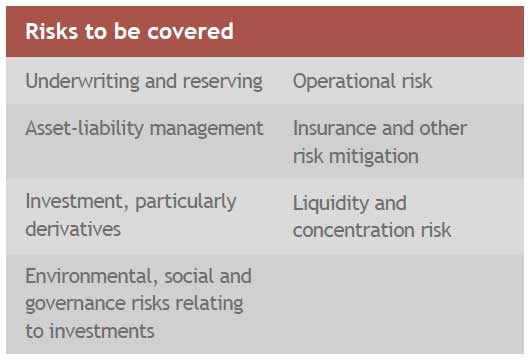IORP II and its impact on pension schemes
The revised EU Directive on Institutions for Occupational Retirement Provision (IORP II) came into force earlier this year. With a target implementation date that is close to when the UK is expected to leave the EU, it is currently unclear how IORP II will be enacted into UK legislation.

The revised EU Directive on Institutions for Occupational Retirement Provision (IORP II) came into force earlier this year. With a target implementation date that is close to when the UK is expected to leave the EU, it is currently unclear how IORP II will be enacted into UK legislation.

However, until Brexit, the Government remains under an obligation to do so.
What does it cover?
IORP II has been implemented to bring consistent governance and accountability to pension provision across the EU. The requirements should be less onerous to schemes in the UK than other EU member states, following the Government’s recent push with TPR to improve UK scheme compliance.
Main areas covered by IORP II
- Governance, including:
- Key functions
- Own risk assessment
- Fit and proper requirements for trustees
- Remuneration policy
- Responsible investment
- Outsourcing
- Disclosure of information
- Cross-border activities
- Governance
Key functions
Under IORP II, schemes are required to have three key functions, covering:
- Risk management
- Internal audit
- Actuarial purposes
Trustees will have to formally appoint named individuals or firms (including trustees) to these roles.
For the internal audit role, an independent person/ organisation must be appointed; candidates cannot include the internal audit team of any participating employer. The scope of the work required as part of this role has yet to be set out.
IORP II is prescriptive on what is covered by risk management, which should, where the scheme has defined contribution benefits, also consider the risks from the perspective of members.

Own risk assessment
As part of risk management, schemes must produce an ‘own risk’ assessment at least once every three years (unless there are significant changes to the scheme risk profile, which would require one to be carried out immediately).
Thanks to TPR’s ongoing focus on integrated risk management, it is likely that many schemes will have their own risk assessment processes reasonably aligned with IORP II’s own risk requirements by the implementation date. However, risk management and assessment are likely to be the most onerous requirements for trustees to implement.
Fit and proper requirements for trustees
There were some fears that the requirement for trustees to have suitable qualifications, knowledge and experience to properly carry out their role would be applied for each individual trustee. However, this is not the case; the trustees must have these collectively within the trustee board to enable prudent management of the scheme.
Remuneration policy
A new requirement for UK schemes will see them need to establish and apply a sound remuneration policy for everyone involved in the running of the scheme, performing the key functions as described and for other categories of staff whose professional activities have a material impact on the scheme’s risk profile. This is likely to include all scheme advisers. The policy must be publicly disclosed and may lead to further clarity on costs following on from TPR’s and the Government’s push for transparency on member charges.
Responsible investment
Thankfully IORP II does not compel trustees to take environmental, social and governance factors into account when making investment decisions. However, as already noted, risk management must take these factors into account as part of scheme governance; the SIP will need to state how the investment policy takes these factors into account.
Outsourcing
There are various procedural requirements for outsourcing scheme activities that trustees must meet. These include common sense matters such as having written agreements with service providers (where the key functions above are outsourced) and not outsourcing where this would unduly increase the risks of the scheme. Notwithstanding this, the Directive also introduces the requirement to notify TPR of those activities outsourced. This must be done in advance for key functions.
Disclosure of information
IORP II prescribes certain information that must be provided to each scheme member, including an annual “pension benefit statement”. Current UK legislation requires similar information to be sent to active members only, rather than all members. This change could place a considerable administrative burden on trustees to collate and distribute the required information, which highlights the importance of ensuring that scheme member data is as up to date as possible.
Cross-border activity
The fear that this would apply to schemes from one member state with members who merely reside in other member states did not comes to pass. IORP II’s cross-border implications only apply to schemes that are truly cross-border and operate in more than one EU member state.
DISCLAIMER
By necessity, this briefing can only provide a short overview and it is essential to seek professional advice before applying the contents of this article. This briefing does not constitute advice nor a recommendation relating to the acquisition or disposal of investments. No responsibility can be taken for any loss arising from action taken or refrained from on the basis of this publication. Details correct at time of writing.
Disclaimer
This article was previously published on Smith & Williamson prior to the launch of Evelyn Partners.



